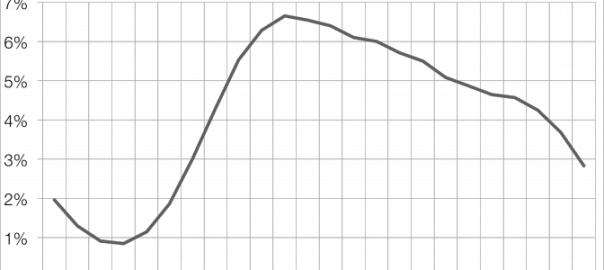Best practices say email blasts should be sent on Tuesdays.
Preferably, the mornings.
Everyone knows that. It’s commonly accepted. Like death and taxes.
We may not like it necessarily, but it’s inevitable.
But here’s the problem.
You (and your customers) are going to get over 140 emails each day by 2018. That adds up to trillions of emails being sent each year.
If every marketer is sending trillions of email blasts on Tuesday mornings how will you stand out?
Here’s why you should consider sending emails over the weekend instead.
How ‘Contra-Competitive Timing’
Best practices, are so, for a reason.
They’ve worked. Consistently. Across-the-board for many people in many industries.
MailChimp is one of the biggest email marketing providers. They’ve performed analyses on ‘send time optimization’ that back up the commonly held beliefs. (like sending email early in the morning).

To this day, most email blasts are still sent on Tuesday mornings for this reason.
But new trends and developments might be disrupting these commonly held best practices.
For example, popular AdWords software company WordStream found that Tuesday mornings are the WORST times for them. Resulting in abysmally low sub-5% open rates. Instead, they shoot for Thursdays which deliver a respectable 25% open rate by comparison.
In other words, they’re able to drive better results by avoiding the most popular days. They capitalize on Thursdays because there’s less competition for their customer’s attention. This gives them a better shot at breaking through the noise.
This strategy was dubbed ‘contra-competitive timing’ years ago by Dan Zarella, HubSpot’s then Social Media Scientist.
In 2011, Dan first worked with a dataset of over 9.5 billion emails to produce The Science of Email Marketing for HubSpot. He later expanded on this concept in his Science of Marketing book.
Open rates, as an email metric or benchmark, are notoriously unreliable. Instead, looking at clicks and clickthrough rates can give you a better predictor of ROI.
In his initial study, Dan found that the highest clickthrough rates occurred on Saturdays and Sundays.
The day with the lowest click through rates? You guessed it – Tuesdays.

But that’s not all.
Unsubscribe rates, another important engagement metric, tend to spike on Tuesdays. Then drop drastically as the week goes on.

More recent data continues to back up this trend.
While Saturdays and Sundays still have the lowest volume of email sent, click through rates are still among the highest of the week. (an average of 17.8% over both days according to Experian)
Consulting firm Harland Clarke Digital found that more emails are viewed on weekends (32.5%). As opposed to the more competitive Wednesdays (15.6%).
Customer.io also confirms the same trends. They go on to say, “The highest CTR actually occurs over the weekend. Email volumes are lower over the weekend and people finally have time read their email.”
The rate of email being sent is increasing exponentially. Most of it’s being sent on the same days, at the same times. That increased competition might be damaging our hopes of getting our own messages through.
With the early signs of opportunity, it might be worth the risk to start sending your emails on the weekend.
Don’t just take their word for it though. Test it for yourself. Here’s where to start.
How to Get Started Testing Email Campaign Performance
Mobile adoption has exploded over the past few years.
Mobile internet usage has surpassed desktop already. This has lead to more emails being now opened on mobile devices.
That means people are getting used to checking email outside of standard work hours. Especially depending on when those work hours take place. So your typical ‘activity peaks’ (of opening and clicking) have been shifting throughout the day, like between 9pm and 12am.
For example, bartenders might work late into the night during the middle of the week. Meanwhile, lawyers might get started early in the morning on a Sunday to prepare for the week ahead. Your audience segments and demographics play a huge role in your distribution preferences and optimal send time.

The easiest way to test any email campaign is to simply split your list in half.
You send one business-as-usual, ‘control’ group a campaign during the normal day and time you always do. And you alter different variables for the second group.
Most email marketing services like MailChimp can help you create A/B tests based on different days and times. You can select a ‘winning’ variable and their system will automatically track results to identify which group won. Rinse and repeat a few times over the next few weeks and you’ll find that sweet spot in no time.

There’s also been some evidence of how the email ‘type’ or desired action changes based on when it’s sent, too.
For example, we’ve already seen that click through rates rise towards the end of the week and over the weekends. So if you want people to take action, those days are a safe bet.
But if you want eyeballs and awareness, you should send more ‘educational’ emails during peak times. which may or may not fall on Saturday and Sunday.
Experian’s data showed that people open emails within an hour after they’re sent. But engagement rates (and replies) to those emails happen late at night between 8pm and 12am.

Finding the perfect day and time to send your email campaigns can’t just come down to luck or best practices. Your customer’s demographics, lifestyle, and desired response needs to be tested regularly.
Conclusion
A series of studies over the past few years have shown that taking a ‘contra-competitive’ approach to email timing can pay off.
Especially as the volume of email competition has gone through the roof. Consumer behavior has evolved with the emergence of new devices that altered how we browse, shop, and check email.
That means what worked years ago, without question… should now be re-visited and re-tested.
Tuesdays mornings may have been the de facto, industry standard for years.
After testing with your own audiences, you might find that Saturday is the new Tuesday after all.
Digital & Social Articles on Business 2 Community(73)





